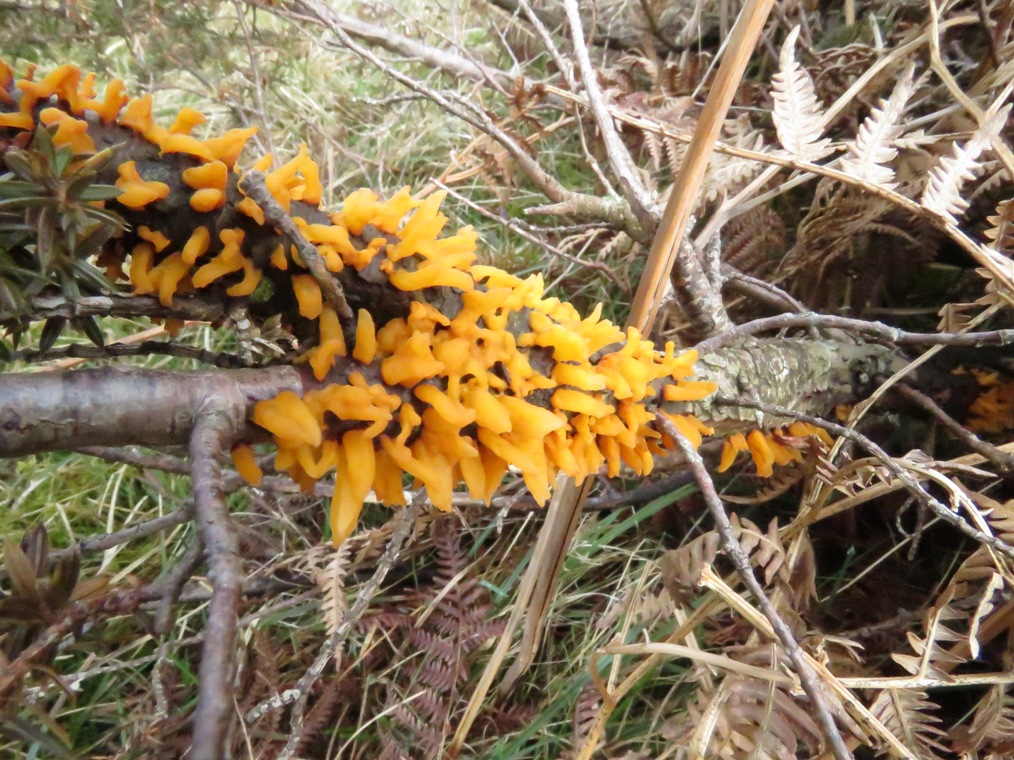 Calocera on juniper 14 April
Calocera on juniper 14 April
 Calocera on juniper 14 April Calocera on juniper 14 April There’s a note in the song of linnet, a single beautiful note that says linnet and nothing else . And here they are. A small flock of linnet settling in for the breeding season in a habitat where gorse flowers, in scrub where a few trees give a safe perch for a male to sing and display. The light is poor, I can infer the crimson on the breast and the forked tail the moment I catch that song. I can see because I know what I should be seeing. When the cuckoo comes, if he comes, I’ll find him here. Until he comes, my morning is dedicated to the linnet who sings high in an ash, a slender, budding ash. To the song of the linnet. 21 April 2007 I was here when I heard my first cuckoo of spring. And a rich and remarkable fruiting appeared everywhere in the juniper, so unusual it reminded me of chrysanthemum flowers. I remember the day well. I had no camera and for the next two days there were downpours. But I went back to photograph the fungus which appears amongst green berries and juniper needles on the cover of About Scout Scar. There had been rain earlier in the week, so the fruit bodies were fully hydrated. They assume a deeper orange in dry weather. Their structure resembles the dead needles of juniper and the fungus erupts out of dead wood. I haven’t seen the fungus here since 2007 and every season I look for it. I spent a couple of hours listening to linnet, finding them and photographing them. They are tiny, nervous birds. The males sing to secure a territory and a mate, but they're secretive once breeding begins and hard to see until they reappear, branching with their young families. They favour the dead branches of hawthorn where they show to advantage. Today, my images are disappointing but a couple of hours close and contemplative with linnet is a morning well spent.
0 Comments
Your comment will be posted after it is approved.
Leave a Reply. |
Archives
July 2024
Categories
All
|





 RSS Feed
RSS Feed